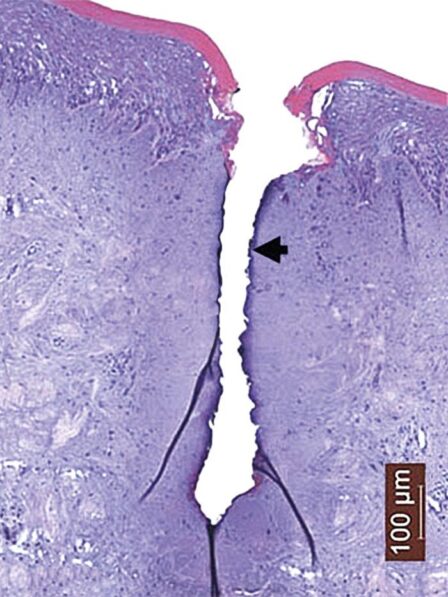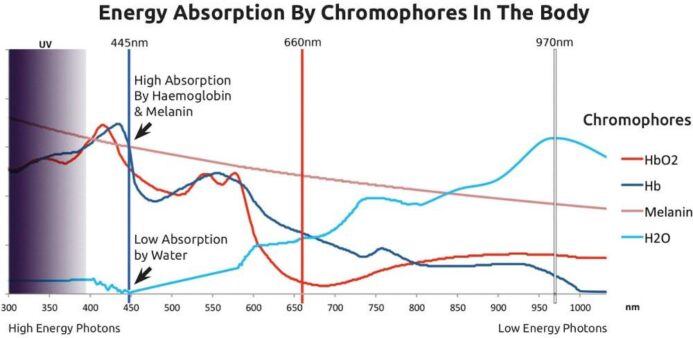K-Laser Blue Laser Technology
ADVANCED SOFT TISSUE SURGERY AND THERAPY
3 SIMULTANEOUS WAVELENGTHS AVAILABLE
445nm
Surgery &
Antiseptic Properties
660nm
Assist
Tissue Healing
970nm
Increase
Blood Flow

Understand K-Laser Blue technology.
Discover Blue Laser Technology At 445nm
Traditionally lasers use infrared IR wavelengths for surgery
K-Laser has been designing soft tissue surgery diode lasers for over 15 years.
Like most laser manufacturers we were using IR wavelengths for surgery as they have very high affinity with water in tissues.
Basically by targeting water in the tissues it is possible to obtain an ablative effect and vaporise these tissues.
Using IR for surgery is technically easy and a relatively affordable technology for practitioners which is definitely an advantage.
Traditionally lasers use infrared IR wavelengths for surgery
When an IR wavelength is used for ablative purpose it targets water in tissues.
To simplify for easy understanding we could say that the IR wavelength will "boil" the tissues to vaporise it.
The issues in doing this are multiple:
- A lot of heat is generated on the targeted point so surrounding tissues are also damaged even if not vaporised (see photo)
- Post surgery: swelling, pain, and inflammation will be triggered due to these "collateral thermal damages"
- Surrounding tissues will later die and potentially create a scar due to the imprecision of the cut.
When precision surgery, quality outcomes, and low post-surgery discomfort is required an IR wavelength is therefore far from ideal.
At K-Laser we are always searching for the best way for technology to serve our practitioners and patients so we had to leave our comfort zone and create tomorrow's standards.
Why did we create Blue Laser technology at 445nm ?
Increasing surgical precision and reducing down-times and post-surgical issues can only happen by avoiding thermal damages to surrounding tissues.
We were also wishing to develop the next generation of medical lasers devices able to target a much wider range of applications in dentistry, and dermatology while keeping a small footprint in the clinic and the ultra-portability of K-Laser devices.
The 445nm wavelength which is Blue colour offers many advantages:
- It has nearly no affinity with water which means that the temperature of the tissues remain practically normal during surgery
- It has high affinity with melanin and haemoglobin which allowed us to develop applications for vascular and pigmented lesions with great clinical outcomes
- It is extremely selective
- Being close to UV light it offers a strong antiseptic effect but without damaging the DNA of cells like UV would do
445nm | 660nm | 970nm
K-Laser
Multi-Wavelength
Technology
Although the best outcomes for surgery are achieved using the K-Laser Blue technology our "Blue devices" for Cosmetic, Dentistry, or Veterinary are equipped with 2 additional wavelengths to increase the number of applications:
970nm | Infrared laser for Photobiomodulation Therapy
660nm | Red laser for wound healing



